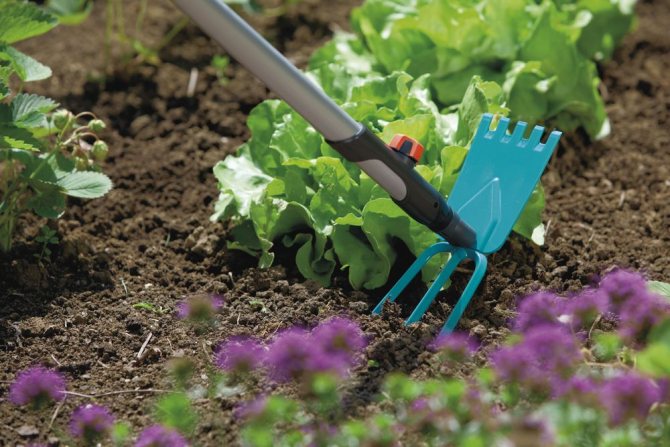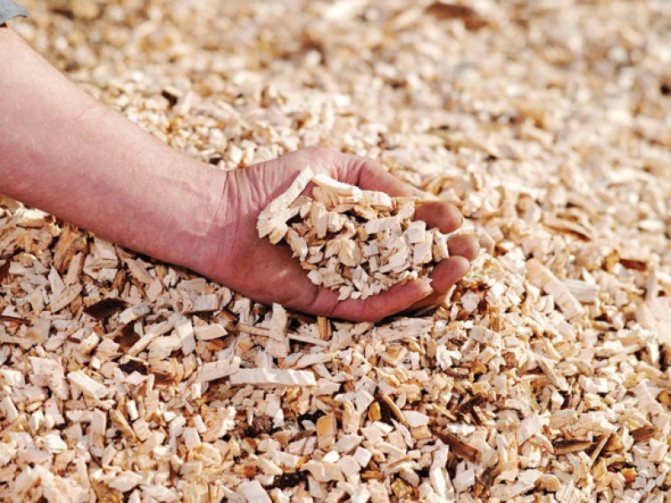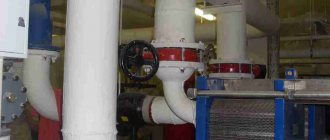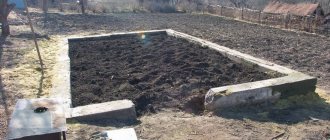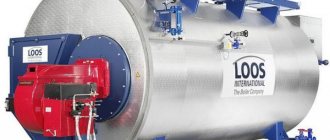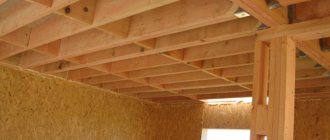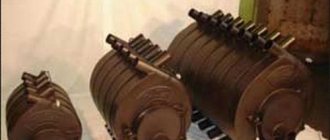Sawdust: methods of application
After certain processing, sawdust is suitable for completely different areas of application:
- Sawdust is used as a type of fuel in solid fuel boilers. They are especially convenient in the form of pellets or fuel briquettes.
- Sawdust is widely used for insulation of premises. Such insulation, unlike most synthetic counterparts, is not afraid of sudden changes in temperature and humidity.
- They are also used for home smoking. Experts will confirm that the best quality of finished products is guaranteed when sawdust is used as a combustible material.
- Sawdust is also appreciated by gardeners, due to its ability to accumulate and retain moisture for a long time, to suppress the growth of weeds, they are suitable for soil fertilization.
This is not a complete list of options for the useful use of sawdust in the household, gardening or construction. And they are needed mainly in dry form.
Sawdust for garden paths
A sawdust garden path is a simple, cute and convenient way to decorate your site. Dig a shallow trench of any shape (about the size of a shovel's bayonet), fill it with sawdust and tamp it. The advantages of such a track:
- it can be made as winding as you like;
- water will not stagnate in it;
- the weeds will not soon break through the sawdust.
Keep in mind that over time, the sawdust will sag in the path, so you will have to add them every year.
How and with what you can dry sawdust
Drying is the evaporation of water from sawdust. There are the following techniques for the selected raw materials:
- Aerodynamic way
- Vacuum method
- Infrared method
- Super high frequency (microwave) method
- Condensing method
- Sawdust drying with convective heat exchange
At the moment, the aerodynamic method and convection dryers (using drum installations) are recognized as the most optimal.
IMPORTANT!
All drying plants are fire hazardous. All conditions of their installation and use should be carefully observed.
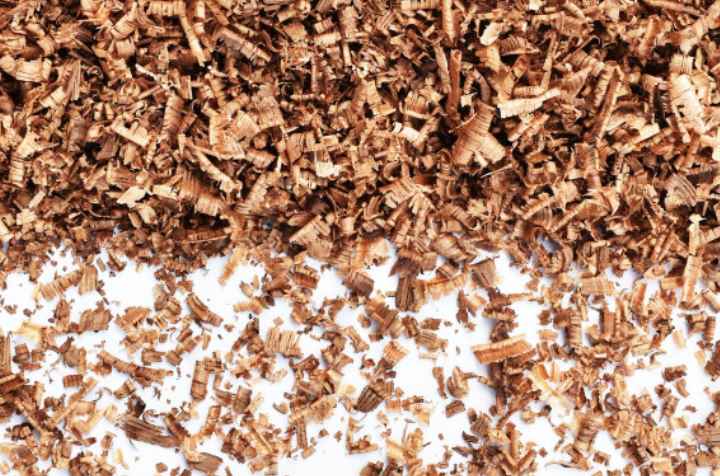
Sawdust plaster
Sawdust plaster is also called warm. With its help, it is possible to insulate the slopes of window and door blocks, to decorate internal walls, as well as facades. In addition, warm plaster is good at isolating noise. You will need pulp (such as shredded old newspapers), cement, and sawdust. The ingredients are mixed in a 2: 1: 3 ratio and diluted with water, after which they are thoroughly mixed again.
We hope that our material was useful to you. Perhaps our list is missing an interesting way to use sawdust in the country, which you know about? Share in the comments!
A source
Aerodynamic drying
Drying of sawdust with this method is done with hot air.
In such a drying installation, in this case, several parts are included:
- Heat generator
- Fan
- Drying line
- Sifter
- Cyclone
- Bake
The advantage of the method is the relatively smaller installation size. And the disadvantages are the complexity of the technological execution, as well as the preliminary execution of a complex of calculations, taking into account the surface area of the processed material, its physical characteristics, parameters and speed of the dryer.
IMPORTANT!
When choosing a dryer, pay attention to its technical parameters. The higher the volume of the dryer, the more power of the heat generator should be.
Drying process technology
Among the factors affecting the speed of the drying process, it is necessary to highlight:
- Indicators of the temperature of the dryer supplied to the drying equipment;
- The relative speed of its movement during the drying process;
- Specific surface area of particles of wood materials;
- Physical properties of materials to be dried.
During the drying process, several physical processes occur simultaneously in the structure of wood materials. As the moisture content of the wood gradually decreases, the particle temperature rises and approaches the temperature of the drying agent. Therefore, in order to exclude the ignition of flammable finely dispersed components of the mixture, the temperature of the desiccant supplied to drying equipment, restrict to a safe level.
Wood waste differs not only in its heterogeneous composition, but also in the size of its constituent particles. Insofar as sawdust drying carried out with the expectation of a small size of the components of the mixture, before feeding it into dryer drum grinding of raw materials is envisaged in order to increase the active surface of the particles. For crushing waste, hammer crushers are used, in which the product is sorted through a sieve, on which the wet product adheres and the process stops.
Drum Drying
The production of freeze-dried fuel raw materials from raw sawdust is possible using hot air drying, blown by fans. The water from their sawdust evaporates during convective heat exchange.
In order for the sawdust to dry better, ensure their continuous contact with the heat carrier: air heated in the heat generator or gases from the furnace.
The most successful solution for the implementation of this option is the use of a drum-type dryer connected to a heat generator. As the drum rotates, a fresh portion of sawdust is constantly introduced into the hot air jet zone. Special paddles inside the drum stir sawdust, moisture evaporates naturally into the environment.
Drying drums are the cheapest of all sawdust drying options with excellent efficiency and ease of execution and operation. The installation is easy to assemble and independently with your own hands, having the appropriate schemes. The disadvantages of this method include the relatively large dimensions of the drying unit, which can complicate transportation if such a need arises.
Types of drying equipment
All currently produced drying equipment is divided into groups, depending on the principle of its operation:
- Contact dryers;
- Convective dryers;
- Radiation dryers;
- Freeze dryers;
- High frequency dryers;
- Combined dryers.
Each of the models of the used dryers differs in its design: they differ drying equipment drum type, belt type, fluidized bed dryers, aerofoil dryers, etc.
As a rule, drying equipment is used depending on the composition and physicochemical properties of wood waste, as well as on the size of their particles. So, for dispersed materials, the optimal solution would be the use of convective dryers, due to the principle of operation of which, constant contact of the drying agent with the surface of the waste is ensured, and sawdust drying becomes better and more efficient.
Air or flue gases heated to the required temperature are used as a dehumidifier. In the event that increased requirements for cleanliness and safety are imposed on the dried material, the use of flue gases in the drying process is unacceptable. Drying equipment, which uses atmospheric air as a drying agent, is equipped with a special heat exchanger, where the dryer is heated. Then it is supplied under pressure to the surface of the wood waste, as a result of which sawdust drying.
Vacuum drying
The technology of vacuum and microwave drying has a common characteristic - water is evaporated at a temperature higher than the boiling point of water.When drying using the vacuum method, there are two phases of the transformation of water: the transition from liquid to vapor, from vapor to liquid.
This method involves the transfer of steam and water to the outer surface of the raw material, evaporating the steam escapes into the atmosphere. When water evaporates from the surface of the raw material, its temperature drops sharply to the temperature around, the drying process immediately slows down. To accelerate it, it is necessary to destroy the boundary upper layer on the surface of the raw material or to noticeably narrow it.
Today there is a dominance of the following types of vacuum drying chambers:
- - with heating the material in a cyclic way;
- - with heating of raw materials by contact method.
Note that in the first case, in the chambers, first of all, the raw material is heated, and then it is evacuated. Several such cycles are repeated until complete drying. Heat is transferred convectively.
The tangible disadvantages of the vacuum method include the long duration of the drying process, high energy consumption for constant heating / cooling of raw materials and drying chambers.
Drum Dryer Working Principle
So, chips and sawdust are loaded into the chamber and begin to move at an angle down the walls towards the unloading compartment. The inner blades and the reliefs of the drum break up the compacted lumps of raw materials. A gas-air mixture heated to 600-700 ° C is pumped into the cylinder from the combustion chamber or from the heat generator. She wraps around the material and heats it up. The moisture evaporates continuously. The dried material is discharged through the hatch. After passing through the chamber, the gases are cooled to a temperature of 80-120 ° C and then directed to the cyclone. There, wood dust and air pollutants are emitted from them.
One operator is required to control the drying. It is necessary to monitor the balance of temperature and volume of the wood fraction: with increased t, more chips are fed or t at the inlet decreases. Conversely, when t at the outlet is below average, the operator increases it at the inlet or reduces the volume of chips.
Advantages of wood chip dryers
The drum dryer for bulk materials is the undisputed leader in its class. This technology is used traditionally, it is well studied and does not promise the owner of the pellet business unpleasant surprises.
Disadvantages of a drum dryer
The disadvantages of the unit are usually called its large size. Such a structure is not easy to transport and install in the overall chain of the complex. Dimensional issues are addressed with sectional structures that allow for easy transport and reassembly of the drum on site.
Another drawback is the high price of the device due to the metal consumption and the complexity of production.
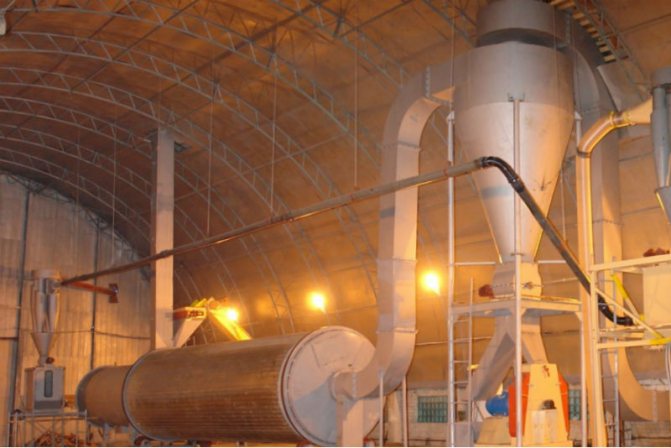

Sawdust as a mulching material


For mulching, you can use rotted, semi-rotten, or even fresh sawdust with a layer of 3-5 cm - such mulch will be especially good under bushes, in raspberries and on vegetable ridges. Over-matured and semi-rotted sawdust can be used directly, and fresh sawdust will have to be pre-prepared, if this is not done, then they will take nitrogen from the soil, and therefore from the plants, as a result, the plantings will wither.
The preparation process is relatively simple - you need to put a large film on a free area, then successively pour 3 buckets of sawdust, 200 g of urea on it and evenly pour a 10-liter watering can of water, then again in the same order: sawdust, urea, water, etc. etc. At the end, close the entire structure hermetically with a film, pressing it down with stones. After two weeks, the sawdust can be safely used.
True, it is wiser to use such a mulching material only in the first half of summer, when moisture from the soil is actively evaporating. In this case, in the second half of the summer, only one memory will remain from the mulch, tk. thanks to the vigorous activity of worms and loosening, it will be well mixed with the soil.If such a thick layer of sawdust is poured in the second half of summer, when there is a lot of rainfall, then such mulch will prevent the evaporation of excess moisture from the soil, which will negatively affect the ripening of annual shoots in fruit and berry plants and their preparation for winter.
If the mulch layer turned out to be too large, and its mixing with the soil did not occur, then in the second half of summer, with heavy rains, it is imperative to carefully loosen the mulched soil. If the rains are rare, then this operation can be transferred to the fall, but you will still have to loosen (or dig or process with a flat cutter, if we are talking about vegetable ridges), otherwise in the spring the frozen layer of sawdust will delay the thawing of the soil layer. This is especially important for areas where planting is carried out early.
Sawdust in greenhouses and greenhouses
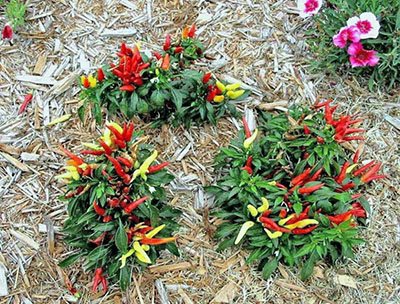

Indoors, sawdust is absolutely irreplaceable. It is useful to season with them both manure and plant residues. In combination with sawdust, manure and all kinds of tops are warmed up faster in spring. In addition, the speed of their overheating increases, and the resulting compost will turn out to be much better both in terms of looseness and air permeability, and in terms of its nutritional value and variety of composition.
It should only be borne in mind that when using fresh manure, fresh sawdust is used, which will take away excess nitrogen from it, and if rotted manure is introduced, or if you do without it at all, then only rotted sawdust is used - they do not need additional nitrogen.
Sawdust can be introduced into the ridges of greenhouses and greenhouses both in spring and autumn, and it is best to mix them with other fragments of the formed soil. It is most reasonable in autumn to lay a layer of plant residues on the ridges in the form of straw, fallen leaves, cut grass and various tops. And in the spring add a layer of fresh manure, sprinkle the latter with lime and a small amount of fresh sawdust, then mix the manure with other organic residues with a pitchfork. After that, you will need to cover the manure with a small layer of straw or leaves, lay a layer of soil, adding ash and mineral fertilizers to it. For better heating, it is also advisable to spill the ridges with boiling water and cover with foil.
Sawdust in compost
Since it is the rotted sawdust that is of the greatest interest, it is more reasonable to punch some of the sawdust. It is best to mix them with manure and poultry droppings (for 1 m² of sawdust, 100 kg of manure and 10 kg of poultry droppings), and then let them lie down for a year, moisturizing and covering, if necessary, so that nutrients are not washed out. It is also useful to add mowed grass, hay, fallen leaves, kitchen waste, etc. to this compost. In the absence of manure, you will have to add urea to the sawdust (200 g of urea for 3 buckets of sawdust), you can replace the urea with a diluted mullein or a solution of bird droppings.
To speed up the process of rotting sawdust, before laying the compost, it is necessary to moisten them well with water, and even better - with slurry or kitchen waste. In addition, it is useful to add soil to the sawdust: two or three buckets for one cubic meter of sawdust. In such compost, earthworms and microorganisms will rapidly multiply, accelerating the process of wood decay.
If sawdust was stored near abandoned tracts overgrown with weeds, they must also be composted first. Moreover, the compost heap must warm up to at least + 60 ° C - only in this case, the weed seeds, which can remain viable for up to 10 years, will die. You can achieve such heating of the heap by sprinkling sawdust with hot water, followed by a quick cover of it with plastic wrap.
Sawdust on strawberry ridges


Sawdust will also be useful when mulching strawberry beds - they will not allow the berries to touch the ground, and this will reduce the loss of fruits from gray rot.
And when applied in autumn (a very thick layer is required), sawdust will also protect the strawberry plantings from winter freezing, and next year they will not allow many weeds to germinate. True, when mulching strawberries, fresh sawdust is needed, pre-treated with urea, and preferably from conifers. Indeed, in this case, they will to some extent begin to scare away the weevil.
Sawdust when forming ridges in low places
Sawdust will also help raise ridges in low places. In this case, wide (30-40 cm) furrows are dug around the proposed ridge to a depth of 20-25 cm. The soil removed from the furrows is laid on the garden bed. Sawdust is poured into the formed trenches around the beds. This is beneficial for a number of reasons. First, after any rain, you can walk to the garden bed in slippers. Secondly, by filling the furrows, you thereby prevent the drying of the bed (especially its edges). Thirdly, the sawdust will prevent weeds from germinating. Fourthly, in the future, rotted sawdust will become an excellent fertilizer - when they are transferred to the garden bed, the earth will become not only lush, but also warmer and more fertile.
Bulletin board
Sale of kittens Sale of puppies Sale of horses
Sawdust on high ridges
In tall beds, formed on a thick layer of organic matter with the addition of a small amount of soil, vegetables, flowers and other garden plants grow well. You can also form such a multi-layer bed using sawdust. First, remove the top fertile soil layer and set it aside. Lay a layer of grass (hay, straw, etc.) in the resulting trench 1 m wide and 3-5 m long (the length depends on desire), pour a layer of sawdust flavored with urea.
Then lay another layer of organic debris, such as leaves, and cover the entire structure with previously laid down earth on top. And so that the earth does not crumble along the edges of the ridge, build a kind of barrier around it of mowed grass, straw or sod layers (it must be put with the roots outward). Keep in mind that plants on such a ridge require more water, so it is also a good idea to cover the sides of the ridge with plastic to reduce evaporation.
Sawdust as a substrate for seed germination
There are two technologies for sowing seeds for seedlings: directly into the soil or into stale sawdust. Sawdust is an ideal soil for a short period of time, because they represent a very loose substrate that ensures intensive development of the root system, on the one hand, and guarantee absolutely painless plant transplantation, on the other. True, we are talking about a short period, because sawdust does not contain nutrients in a form accessible to plants, and therefore plants can develop on them only as long as they have enough nutrition from seeds - that is, approximately until the first true leaf appears.
Sowing technology in sawdust is as follows. A flat, shallow container filled with wet sawdust is taken. Seeds are sown into it at some distance from each other and again sprinkled with sawdust - the last operation for many seeds can be omitted, because in the light, seed germination increases. True, in the absence of the upper layer of sawdust, the danger of drying out the seeds increases, and if you are not able to check their condition several times a day, then it is better not to refuse the upper layer.
The containers are placed in slightly opened plastic bags in a warm place (for example, on a radiator, if it is not too hot there). During the germination period for many seeds, in particular, nightshade crops, it is desirable to maintain a temperature of about 25 ... 30 ° C. With the emergence of seedlings, the temperature is reduced: in the daytime to 18 ... 26 ° C, and at night to 14 ... 16 ° C, but the given temperature data, of course, differ for different plants.
After emergence, the bags are removed, the sawdust is sprinkled with a layer of fertile soil about 0.5 cm, and the containers are moved under fluorescent lamps. When the first true leaf appears, the plants are seated in separate containers.
Sawdust for an early harvest of potatoes
If you dream of getting an early harvest of potatoes, then sawdust will come to the rescue. Get the right amount of light-sprouted early potato tubers, a few boxes, and stale, moist sawdust. Two weeks before planting the tubers in the garden, fill the boxes 8-10 cm with sawdust, place the tubers upside down in the boxes and cover them with a 2-3 cm thick layer of the same substrate.
Make sure that the substrate, on the one hand, does not dry out, and on the other hand, does not become waterlogged. Provide him with a temperature not higher than 20 ° C. When the sprouts are 6-8 cm high, pour them abundantly with a solution of complex mineral fertilizers and plant them together with the soil in prepared holes, filling both the tubers and sprouts with earth. Before this, the soil must be preheated, covered in advance with plastic wrap, and after planting, cover the entire potato area with straw or hay, and then with the same plastic wrap so that the tubers do not freeze. As a result, you will speed up your potato harvest by several weeks.
Svetlana Shlyakhtina, Yekaterinburg
397614
Tags: mulch soil
Share on social networks:
| 0 Lydia 04.07 17:57 |
| Super! What a great article. Everything is clear and there are no questions. I’m the third summer with sawdust, I did something like that, many thanks to the author for organizing my thoughts on this topic. Only we have not really sawdust, but small shavings. Instead of urea, I use quail manure (both solution and dry in wet sawdust in compost) is this correct? my thanks to the author of the article. |
| Name Quote 0 |
| 0 Nikoal Ivanovich 05.07 14:48 |
| You are well done, you can be envied that you have such good fertilizers. You just need to monitor the acidity of the soil. If it suddenly rises, add dolomite flour, and even better - ash, if you have it. |
| Name Quote 0 |
| 0 Svetlana 03.05 17:29 |
| Please tell me how to properly use shredded fresh branches as mulch. Branches are not conifers. Is it possible for strawberries, currants, blueberries? Is it possible for a potato bed, under cucumbers, tomatoes? How will the flowers in the flowerbed react? How to use this mulch correctly? |
| Name Quote 0 |
| 0 Vlad 06.02 21:14 |
| Svetlana! For several years in a row, we have been using this mulch everywhere. Not even enough branches! In the spring we put it EVERYWHERE, and in the fall there is nothing! The worms eat everything! There are a lot of them. You just need to leave space around the trunks, otherwise the trunk of the plant will rot |
| Name Quote 0 |
| 1 a guest 23.11 08:23 |
| How pleasant it is to read! Nothing superfluous, a lot of useful information, literate language. As if you are reading "Science and Life" of the Soviet period. Thank! |
| Name Quote 1 |
Go to the discussion on the forum >>
Add new comment
- How to dry the straw?
Straw and other stem materials have their own characteristics when drying. Harvested in rolls or bales, they are well blown and compactly stored. This allows a different drying method to be applied. The baled straw can be placed in a closed, isolated room, ventilated and supplied with hot air, for example from the aforementioned heat generator, or a simple firebox. In a severe temperature regime, this will allow you to dry a significant amount of raw materials in the shortest possible time. Then, as needed, you can grind the dried straw.
How to dry sawdust?
In addition, such moisture meters have a certain error. The most reliable and economical method of measuring the moisture content of bulk materials "by weight" is described in the Soviet GOST. Required tools: - accurate scales (up to 1 g) - electric oven The process consists in periodic heating followed by weighing a sample of the material.After each heating, the sample mass decreases due to moisture evaporation. After stabilization of the sample mass, i.e. complete removal of moisture is determined by the mass and percentage of moisture in the original sample. From practice, it takes 6 heating cycles for 5 minutes to completely evaporate moisture.

